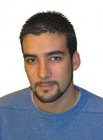Close-Range Sensing: Analysis and Applications
President | |
 | Fabio Remondino
|
Secretary | |
 | Fabio Menna
|
Terms of Reference
- Vision metrology systems for industrial applications
- Photogrammetric techniques for architectural, archaeological and cultural heritage applications
- Systems and algorithms for real-time imaging and mobile mapping data processing
- Integration and fusion of multiple data sources for advanced automated object extraction, recognition and modeling
- Laser scanning, range imaging, low-cost gaming sensors and other active imaging techniques for 3-D representation of static and dynamic objects and scenes
- Vision-based techniques for visualization, simulation, robotics and animation
- Photogrammetric techniques for close range morphological measurements in earth sciences
- Photogrammetric techniques in biomedical engineering and human motion studies
- Functional algorithms for close range photogrammetric orientation and object modelling
WORKING GROUPS of ISPRS COMMISSION V
WG V/1 - Vision Metrology
WG V/1 Terms of Reference
- Performance evaluation of active and passive systems
- Definition of accuracy and best practice
- Contribution to international standards
- System developments and industrial applications
- Very close range and large volume measurement applications
- Camera-controlled robot and machine guidance
- Strengthen co-operation and involvement of industrial partners in ISPRS activities
WG V/2 - Cultural Heritage Data Acquisition and Processing
WG V/2 Terms of Reference
- Development and promotion of photogrammetric measurement techniques and spatial information systems applicable to cultural heritage
- Integration of measurement techniques supporting metric and remote sensing survey, monitoring and valorisation requirements of the archaeology, architecture, conservation, restoration and archiving communities
- Development and dissemination of best practice protocols to aid appropriate application across related cultural heritage fields
- Development and promotion of low-cost, rapid, innovative, automated, commercial and open-source approaches for metric and remote sensing survey of heritage assets
- Close co-operation with related disciplines, national / international groups (e.g. CIPA) and other ISPRS working groups
WG V/3 - Terrestrial 3D Imaging and Sensors
Co-Chair
Roderick Lindenbergh
Secretary
Francesco Pirotti
WG V/3 Terms of Reference
- Characterization (radiometric and geometric), calibration and evaluation of active and passive sensors for terrestrial applications
- Automated and robust methods for point cloud registration, feature extraction, object recognition, and scene classification (in cooperation with WG III/2, WG V/4 and ICWGV/I on “Mobile Scanning and Imaging Systems for 3D Surveying and Mapping”)
- Evaluation of new 2D and 3D imaging sensors, including gaming and low-cost sensors
- Processing methods for 3D imaging sensors
- Integrated sensors and data fusion on static and kinematic platforms for surveying and 3D modeling applications (in coopeation with ICWG V/I and WG V/2, V/4, V/5)
- Involvement of system manufacturers, developers and service providers
WG V/4 - Terrestrial 3D Modelling: Algorithms and Methods
Secretary
Diego Gonzalez-Aguilera
WG V/4 Terms of Reference
- Stimulate the development of algorithms and software tools for (automated) geometric and appearance modelling using different data sources
- Promote integrated processing of point clouds (in collaboration with WG V/2, WGV/3, ICWG I/V and WG III/2), image and video data for the generation of realistic 3D models usable in the heritage field and for virtual environments, animations, BIM, etc.
- Benchmark the quality of terrestrial 3D modelling methods and outputs as well as creation of best practice protocols and examples
- Seek co-operation and involvement in the BIM domain (in collaboration with WG IV/7)
WG V/5 - Close-range Measurements for Biomedical Sciences and Geosciences
WG V/5 Terms of Reference
- Research and development in close-range techniques and systems for 3D reconstruction in the fields of geomorphology, earth science, hydrology, glaciology, climatology, hazard monitoring, geology, medical imaging, body/sports measurement and modeling, etc.
- Identify and promote different camera geometries and networks suitable for different scales of enquiry
- Educate and inform “non-geomatics” users of the existence and benefits of involvement with ISPRS
- Involve Geomatics experts in organizations involved with bio- and geoscience
- Establish and make freely available “best-practice” guidelines for non-expert users of consumer grade digital cameras and terrestrial laser scanners
- Establish collaboration with TC VIII activities on hazard monitoring and forest biomass analyses